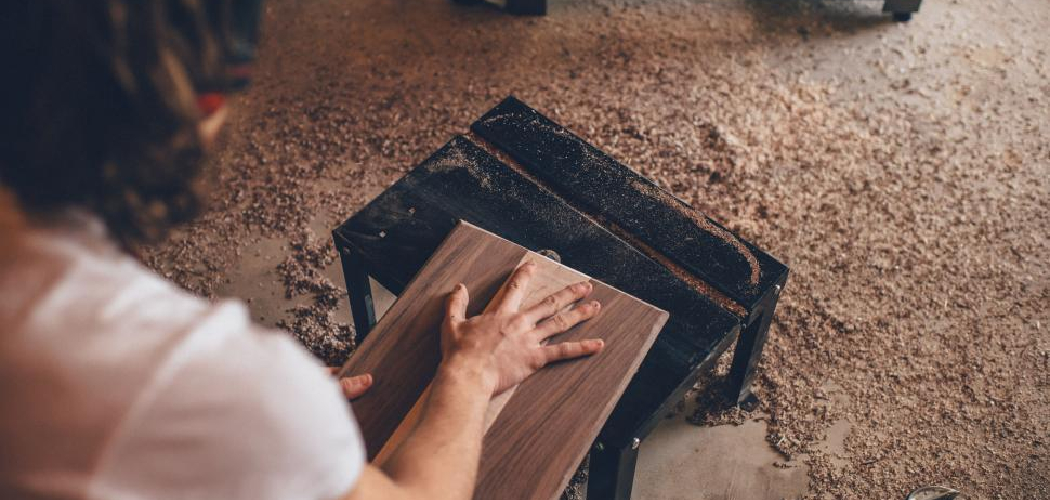Are you tired of your oak table’s old, worn-out look? Refinishing it can give it a brand-new look and make it the centerpiece of your dining room.
How to refinish oak table is a rewarding DIY project that can breathe new life into an aging piece of furniture. Often, oak tables, renowned for their durability and timeless beauty, may begin to show signs of wear and tear over time. You can restore your table’s original luster and charm with a little patience and the right tools.
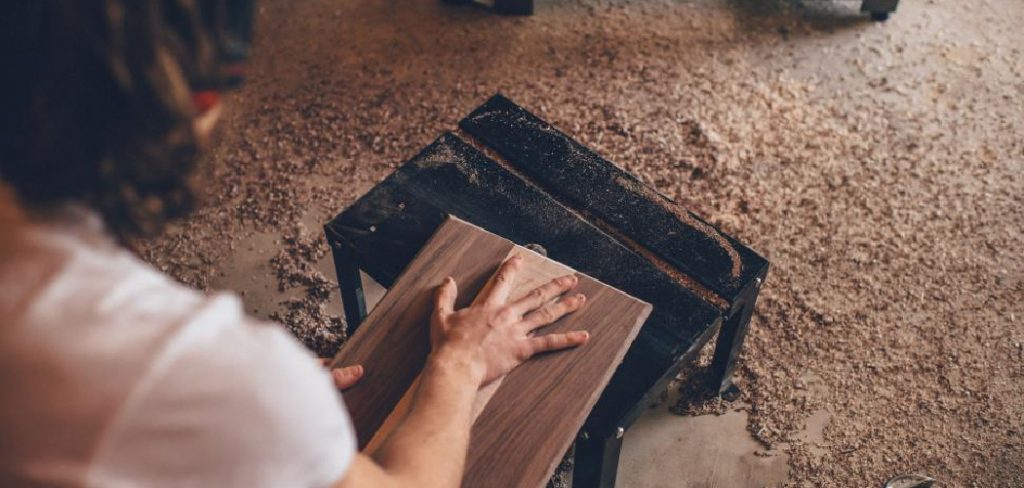
This guide will walk you through the steps of stripping the old finish, sanding the surface, applying a new stain or varnish, and sealing the table for protection. Whether you want to preserve the natural oak beauty or give it a modern twist, refinishing lets you customize your table to fit your evolving style and home decor.
What Will You Need?
Before refinishing your oak table, ensure you have all the necessary tools and materials ready. Here’s a list of things you’ll need:
- Protective gear (gloves, safety glasses)
- Drop cloth or plastic sheeting to protect your work area
- Chemical stripper
- Scraper or putty knife
- Sandpaper (in various grits – 80, 120, 220)
- Tack cloth or damp rag for wiping off dust and debris
- Stain or varnish of your choice
- Paintbrushes (for applying stain/varnish)
- Polyurethane sealer
Once you have all the materials, it’s time to refinish your oak table.
10 Easy Steps on How to Refinish Oak Table
Step 1: Prepare Your Work Area
Begin by choosing a well-ventilated area for your project, such as a garage or an outdoor patio. This will ensure adequate ventilation when using a chemical stripper and other potentially hazardous materials. Lay down a drop cloth or plastic sheeting to protect the floors and surrounding surfaces from dust and spills.

Ensure you have enough space to move around comfortably and all your tools within easy reach to avoid unnecessary interruptions. Wearing protective gear, including gloves and safety glasses, is crucial to shield yourself from the chemicals and dust. Proper preparation of your work area helps maintain cleanliness and enhances safety and efficiency throughout the refinishing process.
Step 2: Remove the Old Finish
To remove the old finish from your oak table, apply a generous amount of chemical stripper using a paintbrush. Be sure to follow the manufacturer’s instructions regarding the application and the required time for the stripper to work effectively. Allow the stripper to penetrate the old finish, usually around 15 to 30 minutes, or until you notice the finish bubbling or softening.
Once the finish starts to lift, use a scraper or putty knife to remove it gently, not damaging the wood surface. Work in small sections, and be patient; you may need to apply additional coats of stripper for stubborn areas. After removing the old finish, wipe down the table with a damp rag to remove any residual stripper and allow it to dry thoroughly before moving on to the next step.
Step 3: Sand the Surface
Once the old finish is removed and the table is completely dry, it’s time to sand the surface to create a smooth and even base for the new stain or varnish. Start with a coarse sandpaper, such as 80-grit, to remove any remaining finish and smooth out surface imperfections. Work in the direction of the wood grain to avoid creating scratch marks.
Once the surface feels even, switch to a medium 120-grit sandpaper, and finally finish with a fine 220-grit sandpaper for a silky smooth surface. Be thorough in your sanding to ensure the wood’s pores is ready to absorb the new stain. After sanding, use a tack cloth or a damp rag to wipe away all the dust and debris from the surface. Proper sanding is crucial for achieving a professional-looking finish and enhancing the beauty of the oak grain.
Step 4: Apply the New Stain or Varnish
With a clean and dust-free surface, you can apply your chosen stain or varnish to enhance the oak’s natural beauty. Using a paintbrush, apply the paint or varnish evenly along the direction of the wood grain. If you’re staining, allow the stain to sit on the surface for the time recommended by the manufacturer, then wipe off any excess with a clean cloth.
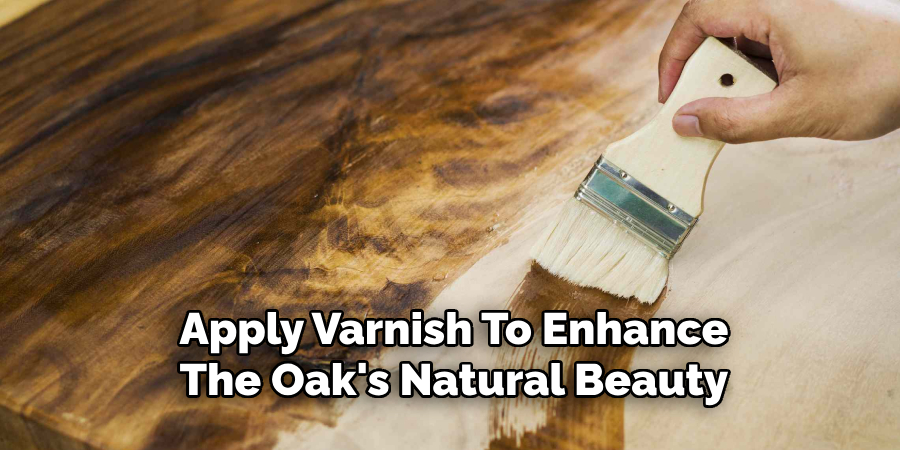
This helps achieve the desired color depth and evenness. If you prefer a darker tone, apply additional coats as necessary, allowing adequate drying time between each coat. Apply thin, even coats for varnishing and use long strokes to prevent streaks or brush marks.
Step 5: Seal the Table for Protection
After the stain or varnish is thoroughly dry, it’s crucial to seal the table to protect it from future damage and preserve your hard work. Use a polyurethane sealer, choosing either a gloss or matte finish, depending on your preference. Apply the sealer using a clean paintbrush, ensuring even coverage by brushing along the wood grain.
To avoid bubbles or an uneven surface, apply thin coats and allow each layer to dry completely according to the manufacturer’s instructions. To ensure a smooth finish, you may need to sand between coats with a fine 220-grit sandpaper lightly.
Step 6: Inspect and Touch Up
Once the sealer has dried thoroughly, it’s time to inspect the table for any imperfections or areas that need touching up. Carefully examine the surface and edges for uniformity in color and finish. If you notice any uneven spots or minor blemishes, lightly sand the area with fine 220-grit sandpaper and apply an additional coat of stain, varnish, or sealer as needed.
Make sure to blend the touch-up areas smoothly with the surrounding finish to maintain a seamless look. After any touch-ups, allow the table to dry completely. This final inspection and touch-up step ensures that your oak table looks professionally refinished and enhances its durability and aesthetic appeal.
Step 7: Maintain Your Table
Regular maintenance is essential to keep your newly refinished oak table looking its best. Dust the table regularly with a soft, dry cloth to prevent the accumulation of dirt and debris. Use a damp cloth and mild soap for a deeper clean, but be sure to dry the surface immediately to avoid water exposure that can damage the finish.
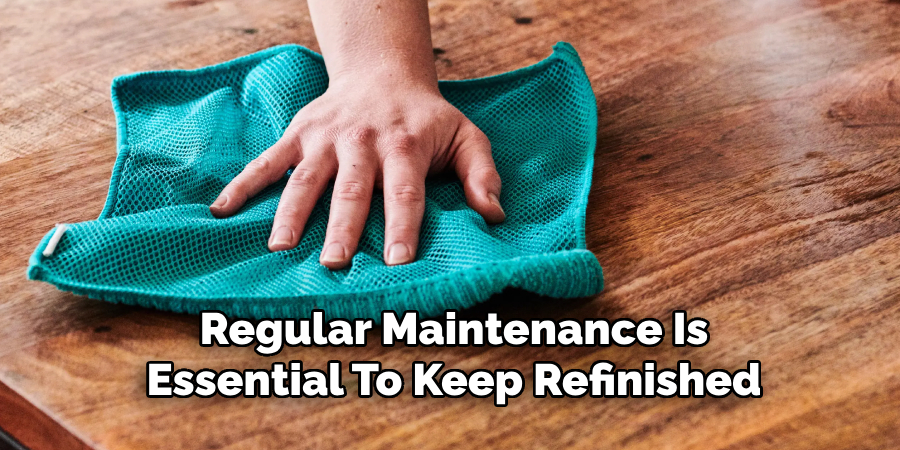
Use coasters, placemats, or tablecloths to protect the surface from spills, stains, and heat marks. Periodically inspect the table for any wear signs and promptly address them with appropriate touch-ups. By caring for your table with these simple maintenance steps, you can ensure its beauty and durability for years, keeping it as a cherished piece in your home.
Step 8: Enjoy Your Restored Table
Now that your oak table is beautifully refinished and adequately maintained, it’s time to enjoy the results of your hard work. Whether you’re hosting a dinner party, having a casual family meal, or simply appreciating its presence in your home, your table is now a standout feature.
Its renewed appearance can enhance the ambiance of any room, serving as a testament to your craftsmanship and attention to detail. Take pride in knowing that you’ve restored the table’s elegance and extended its life for future enjoyment and gatherings.
Step 9: Share Your Experience
Having completed the refinishing process, sharing your experience can be invaluable to others considering a similar project. Document your journey by taking before-and-after photos of your oak table, highlighting the significant transformation. Write a summary of the methods and materials you found most effective, along with any challenges you encountered and how you overcame them.
Share any tips or tricks you learned that might help others achieve a professional-looking finish. You can share your story on home improvement forums, blogs, or social media platforms. By doing so, you inspire others and contribute to a community of DIY enthusiasts eager to learn and improve their skills.
Step 10: Plan Your Next Project
With your oak table successfully refinished and your confidence boosted, it’s an excellent time to plan your next DIY endeavor. Reflect on other furniture pieces or home elements that could benefit from restoration or enhancement. Identify projects that align with your skill level and available resources, and determine the techniques and materials you’ll need.
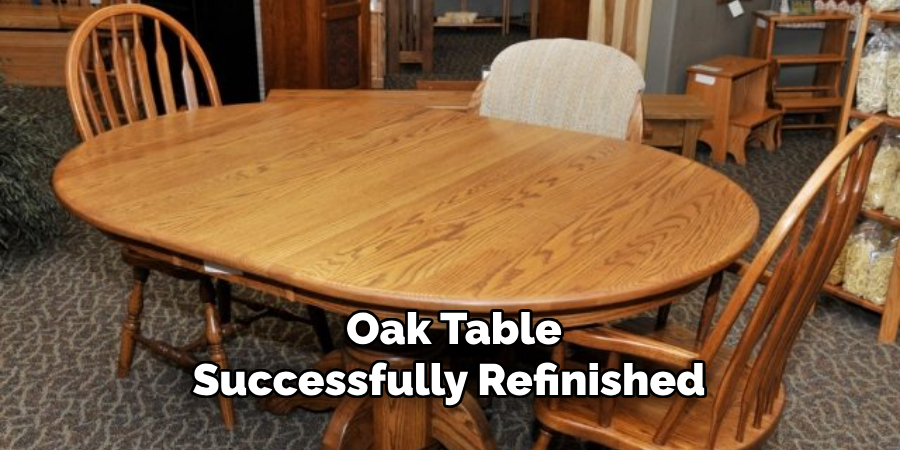
Set realistic goals, timelines, and budgets to guide your efforts effectively. Consider venturing into new crafts or techniques to broaden your skills, such as upholstery, painting, or woodworking.
By following these steps, you can beautify your home and develop a fulfilling hobby and lifelong skill.
Conclusion
How to refinish oak table can be a rewarding and transformative process, allowing you to rejuvenate a cherished piece of furniture and extend its lifespan.
Throughout this guide, we have explored the essential steps to achieve a professional-quality finish, from preparing the surface and applying stain or varnish to sealing and maintaining the table for long-term beauty. By tackling this project, you have enhanced the table’s aesthetic appeal and durability and gained invaluable DIY skills. Whether you’re a novice or an experienced craftsperson, following these steps empowers you to tackle similar furniture projects confidently.
Remember that each piece of furniture has its unique challenges. Still, with patience and attention to detail, your efforts will result in beautiful, timeless pieces that enhance your living space and reflect your style.

